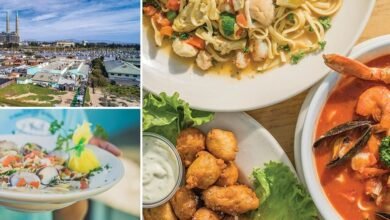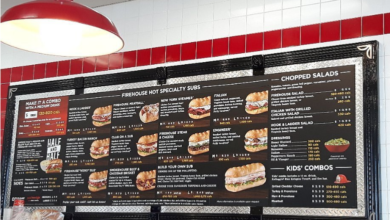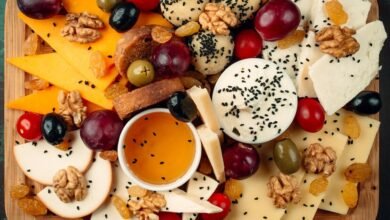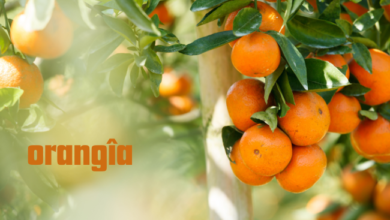Discovering Frutas com E: Unique and Exotic Delights

If you’ve ever wondered if there are any fruits that start with the letter “E,” this post is for you! We’re diving into the world of Frutas com E that are both unique and fascinating. With each fruit you discover, you’ll learn more about these exotic treats and their origins.
In this guide, you’ll explore a range of fruits starting with E, from the sweet esfregadinha to the exotic engkala. Get ready to expand your knowledge about fruits with E and perhaps find a new favorite!
Frutas com E: Discover the Sweetness of Esfregadinha
The esfregadinha is a delightful fruit with a reddish-purple skin and a sweet, yellow inside. This fruit is often found in tropical regions and is known for its juicy texture and rich flavor. It’s called by several names like ameixa-de-madagascar and cereja-de-cameta. The sweet taste of esfregadinha makes it a popular choice for both fresh eating and cooking.
If you ever get a chance to try esfregadinha, you’ll find it to be a delicious treat. Its unique sweetness and tropical flavor make it a favorite in many cultures. Enjoy it fresh or use it in recipes to add a touch of exotic flavor to your meals.
Escropari: An Unusual Yellow-Red Fruit
The escropari is a striking fruit with a yellow-red color, commonly found in the Amazon region. Known by names like bacupari and limãozinho, it has a tangy taste that adds a zesty twist to local dishes. This fruit is not only tasty but also packed with nutrients that benefit your health.
Escropari is often used in traditional recipes and is celebrated for its unique flavor. Its vibrant color and tangy taste make it a standout choice for those looking to try something new and exciting. If you can find it, don’t miss the chance to taste this remarkable fruit.
Engkala: The Pink Fruit of Indonesia and the Philippines
The engkala is a rounded fruit with a pink and white skin, native to Indonesia, the Philippines, and Malaysia. It has a mild, pleasant flavor that makes it a favorite among tropical fruit lovers. Engkala is enjoyed in various regional dishes and adds a subtle touch of sweetness to your meals.
This fruit’s unique appearance and delicate taste make it a delightful addition to any fruit collection. If you’re exploring tropical fruits, the engkala is a must-try. Its exotic flavor is sure to impress and enrich your fruit experience.
Embaubarana: A Small Fruit from the Amazon
The embaubarana is a small, oval fruit with minimal pulp, native to the Amazon region. Also known as embaúba-da-mata and sambaíba-do-norte, it has a distinct taste that reflects the rich biodiversity of the rainforest. Despite its small size, it offers a flavorful punch.
Embaubarana is often used in local recipes and is appreciated for its unique characteristics. It’s a great example of the diverse fruits found in the Amazon. If you’re interested in exotic fruits, the embaubarana is definitely worth exploring.
Embaúba: The Purple Fruit with White Flesh
The embaúba is a small fruit with a purple skin and white flesh. It’s also known by names like umbaúba and pau-de-lixa. The fruit’s sweet and slightly tangy taste makes it a pleasant choice for fresh eating. It’s often enjoyed for its unique flavor and vibrant color.
If you come across embaúba, give it a try. Its rich taste and beautiful appearance make it a delightful fruit to add to your diet. Whether eaten fresh or used in recipes, embaúba is a great way to enjoy tropical flavors.
Esporão-de-Galo: A Sweet and Tangy Treat
The esporão-de-galo is a small, orange fruit with a sweet and tangy flavor. Known also as espora-de-galo, it has a slightly bitter finish because of its seeds. This fruit is unique in its flavor profile, offering a mix of sweetness and a touch of bitterness.
Esporão-de-galo is often used in traditional dishes and is appreciated for its complex taste. If you’re looking for a fruit with a distinctive flavor, this one is worth trying. Its unique taste makes it a standout choice for adventurous eaters.
Curiosities About Fruits with E: Learn More
Fruits with E offer a fascinating look into the variety of nature. From the sweet esfregadinha to the exotic engkala, each fruit brings something special to the table. Exploring these fruits not only broadens your fruit knowledge but also connects you with different cultures and their traditions.
Trying fruits with E can be a fun way to expand your culinary horizons. These fruits add exotic flavors and interesting textures to your diet. So, if you’re curious about new fruit experiences, give these fruits a try and enjoy their unique qualities.
FAQ’s
Q: What is an esfregadinha?
A: The esfregadinha is a tropical fruit with a reddish-purple skin and sweet yellow flesh. It is known for its juicy texture and is also called ameixa-de-madagascar.
Q: Where is the escropari fruit commonly found?
A: The escropari fruit is typically found in the Amazon region. It has a yellow-red color and a tangy taste, and is also known by names like bacupari.
Q: What does engkala taste like?
A: Engkala has a mild and pleasant flavor. It is a pink and white fruit native to Indonesia, the Philippines, and Malaysia.
Q: What is the embaubarana fruit used for?
A: The embaubarana is used in local dishes and traditional recipes. It is a small, oval fruit from the Amazon with minimal pulp and a distinct taste.
Q: What is unique about the esporão-de-galo fruit?
A: The esporão-de-galo is a small, orange fruit with a sweet and tangy flavor, though it has a slightly bitter finish due to its seeds. It is also known as espora-de-galo.
Conclusion
Frutas com E” might not be very common, but they are definitely interesting! From the sweet esfregadinha to the unique escropari, each fruit offers a special taste and story. If you’re curious about different fruits or just want to try something new, these “Frutas com E” a great place to start.
Exploring new fruits can be a fun way to learn about different cultures and flavors. So, the next time you see a fruit with an “Frutas com E” name, give it a try! You might find a new favorite fruit to enjoy.



